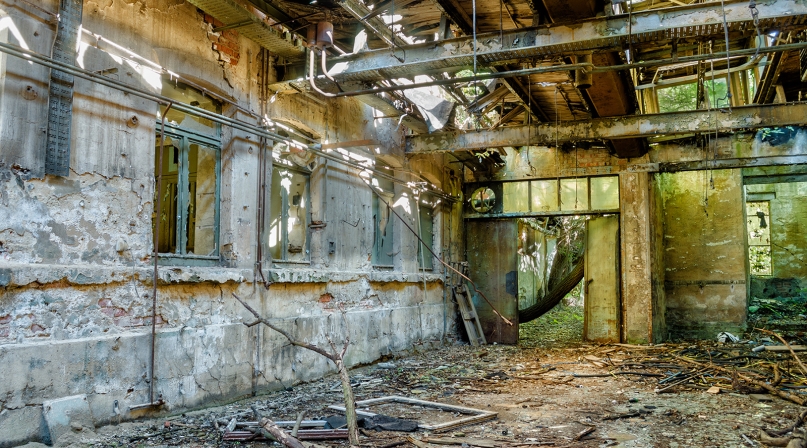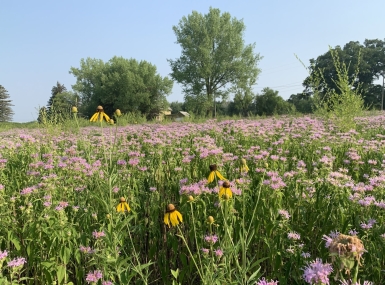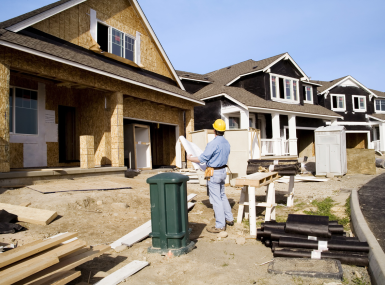Strong, local leaders: Secret to brownfields funding

Affordable housing construction is a good option for reclaimed brownfield sites
If your county is looking to turn a neglected property into something dynamic for your community, strong local leadership is often what it takes to get the federal funding to spark redevelopment, according to David Lloyd, director, Office of Brownfields and Land Revitalization at the Environmental Protection Agency.
Learn More
“I think to be successful in brownfields, a community needs strong leadership, a champion,” Lloyd said last week. “In a smaller area, you get a local civic leader and they can just drive the train really fast and hard.”
Federal brownfields grants are administered through an EPA program begun in 1995 that provides funds for inspection and cleanup of contaminated sites so that they can be used in redevelopment projects.
Cleaning up brownfields in your county can increase property values by 5 percent to 15 percent and for each public dollar spent, attract more than $17 in private investor funding. The federal government Accountability Office estimates there are 425,000 of these types of properties — think abandoned strip malls, gas stations, dry cleaners, junkyards, warehouses and industrial properties — across the nation.
Several brownfields reauthorization bills are awaiting action in Congress. Typically, the brownfields program is budgeted at about $160 million per year.
“Administrator Pruitt has made work on brownfields sites a key agency priority goal for 2018 and 2019,” Lloyd said. The brownfields plan is included in the draft EPA strategic plan, released Oct. 2, he noted.
“Cleaning up these sites and returning them to public and business uses is good for the environment, good for the communities where they’re located and good for jobs and the economy,” he said.
What is a brownfield?
The EPA defines a brownfield as “real property, the expansion, redevelopment, or reuse of which may be complicated by the presence or potential presence of a hazardous substance, pollutant or contaminant.”
“Brownfield sites are in every community — urban, rural, big and small,” Lloyd said. “Also abandoned properties where they’re just derelict would qualify as a brownfield site. It can be a property where there is perceived contamination that is holding back investment in the property.” The EPA can do some investigative work to free up the property for redevelopment.
The actual presence of contaminants must be determined by an investigation known as an environmental site assessment, or ESA. The Comprehensive Environmental Response, Compensation, and Liability Act of 1980 made the purchaser of any real property liable for any contaminants on the property.
The act’s retroactive liability has made the performance of an assessment a practical necessity for any potential buyer of property, who naturally does not want to assume liability for the cleanup of any contaminants found there.
Where are most brownfields found? “The upper Midwest, the industrial states, as you might expect, have the most visible brownfields,” Lloyd noted. If you look at the EPA brownfields regions, you’ll find the most in regions 1, 3 and 5 have the most.
But don’t think it’s just urban areas that have brownfields or get funding. “A misconception I think is that all of our funding goes to urban locations,” Lloyd said. “We actually have found the small rural communities are competing more effectively for our resources. We estimate 15 percent of our grants go to communities with under 10,000 population and 26 percent goes to communities with populations under 20,000.”
Another way to get a leg up on grants: The EPA brownfields program has technical assistance providers “that really help communities write their applications and get these grants,” Lloyd said. “They’ll walk an applicant through the whole process. ‘You’re weak here, you’re strong there.’”
Most redevelopments are made with a combination of private and public funding, Lloyd said. Once a federal grant is received it will almost always leverage more local or state funds, he said. And that in turn attracts private dollars.
“We estimate we leverage between $17 to $18 for every $1 of EPA funding,” he said. For FY2017, brownfields grantees said they leveraged $1.7 billion from public and private sources. Increased tax revenues also pour in once a property has been redeveloped.
Are there any brownfield redevelopment trends? “Well with the economy strengthening after the slowdown in 2008, we’ve seen an explosion of growth of all kinds,” Lloyd said. “Mixed-use is sexy and attracts developers and gives a little something to everybody. The other area is affordable housing. Building affordable housing on former brownfields has really taken off.”
Hennepin County success story
Cleaning up a blighted property has both environmental and economic plus-sides for counties including raising overall property values. Studies estimate that for every acre that is redeveloped, it produces an estimated 10 jobs and saves 4.5 acres of open space.
A success story that favored Hennepin County, Minnesota, took place when a vacant, 5.8-acre site of a former lithium processing facility was cleaned up and redeveloped. Located near a public park and an elementary school, the property attracted vagrants and drug activity, and had been the subject of 45 police calls within five years, according to the EPA.
When a private developer purchased the property, initial assessments revealed lithium-impacted soils to a depth of 16 feet, as well as petroleum, lead and barium contamination. A loan from EPA’s Brownfields Cleanup Revolving Loan Fund awarded to Hennepin County and a partnership between the county and the Minnesota Department of Employment and Economic Development (DEED) helped to cover the financing required for the $2.3 million cleanup. In return, the developer kicked in $4.6 million to redevelop the property into an office building. More than 20,000 pounds of pure lithium and other contaminants were removed from the property’s soil and ground water before building started.
The assessed value of the property went from $1.7 million to $5.2 million, and the property’s tax revenues for the city increased by 350 percent. Before redevelopment was even complete, nearly 80 percent of the office facility had been leased by a promotional manufacturing and distribution firm that brought 100 jobs to the community. The private developer received the Twin Cities Business Journal’s “Best in Real Estate Award” in the Redevelopment Category for 2003, and the National Association of Industrial and Office Professionals’ “Award of Excellence” in the Multi-Tenant Industrial Building category in 2005.
But, not every brownfields redevelopment works out. Property owners and traditional developers encounter many impediments to redeveloping brownfields, according to the National Brownfield Association, including:
- Lack of necessary funding for cleanup
- Concerns over liability
- The need for environmental assessments of the properties
- Uncertainty over cleanup standards
- Unfavorable neighborhood and market conditions
- Land assembly issues, and
- Reluctance to invest in distressed communities, due to concerns with urban socio-economic conditions.
If your county is interested in finding out more about how to redevelop brownfields, visit www.brownfields2017.org to learn about a national brownfields training conference, Brownfields2017 “Sustainable Communities Start Here,” taking place Dec. 5-7 in Pittsburgh. NACo is a promotional partner of the event.
Brownfields legislation pending on Capitol Hill
Legislation concerning brownfields is currently pending in the House and Senate. The bills include:
There are three viable vehicles in which Congress could use to pass brownfields legislation.
On the House side, the House Committee on Transportation and Infrastructure approved the Brownfields Reauthorization Act of 2017, H.R. 1758, sponsored by Rep. Elizabeth Esty (D-Conn.), over the summer. It would reauthorize the EPA’s brownfields redevelopment program at $200 million a year.
The House Committee on Energy and Commerce passed the Brownfields Enhancement, Economic Redevelopment and Reauthorization Act of 2017, HR 3017, which would extend liability protections for local governments that acquire brownfields. The two House committees are in the process of negotiating a compromise between the two bills.
On the Senate side, a bill introduced by Sen. James Inhofe (R-Okla.) was placed on the Senate legislative calendar Sept. 7.
The EPA’s David Lloyd said that his office is advising against “Any [legislative] changes that would designate end uses. We feel communities need to decide what they need and want. Some communities might want a big box store while others want a big public space.”
Attachments
Related News

House Passes Historic Outdoor Recreation Legislation
The U.S. House passed the bipartisan EXPLORE Act (H.R.6492) on April 9 to boost outdoor recreation opportunities on public lands and aid local economies

Sherburne County and tribal nations collaborate on county park
Sherburne County, Minn. engaged tribal nations to revise its plans for a park that included a Native American burial ground.

